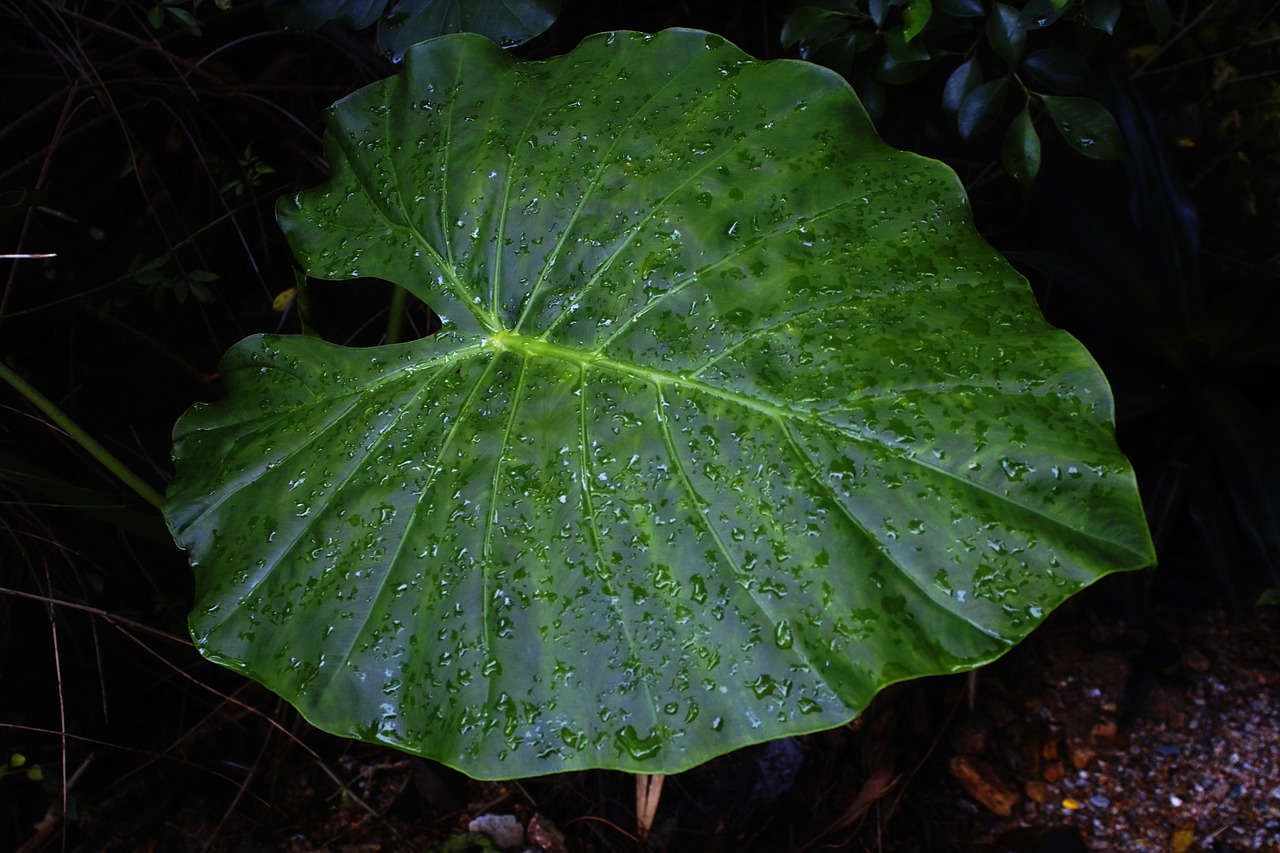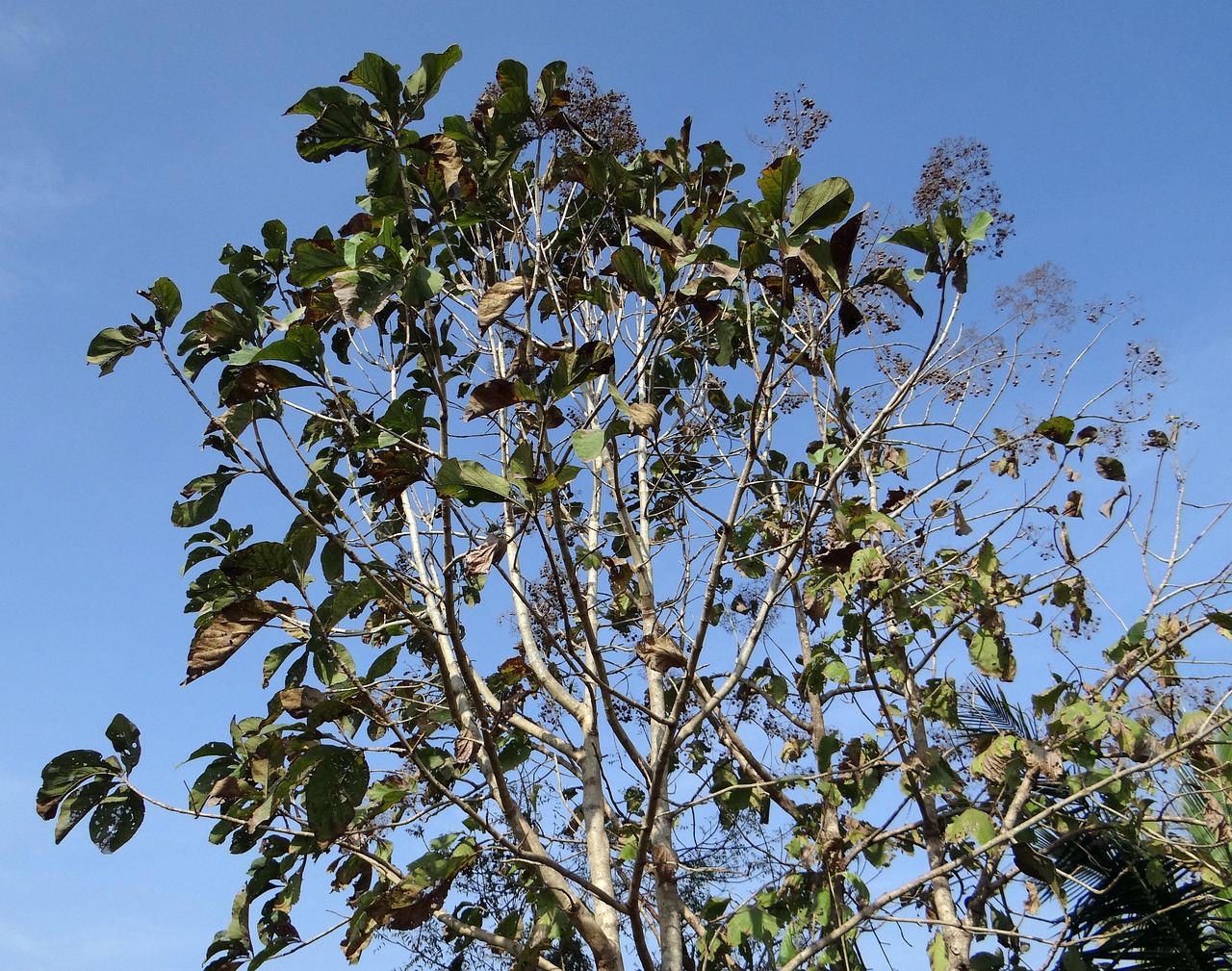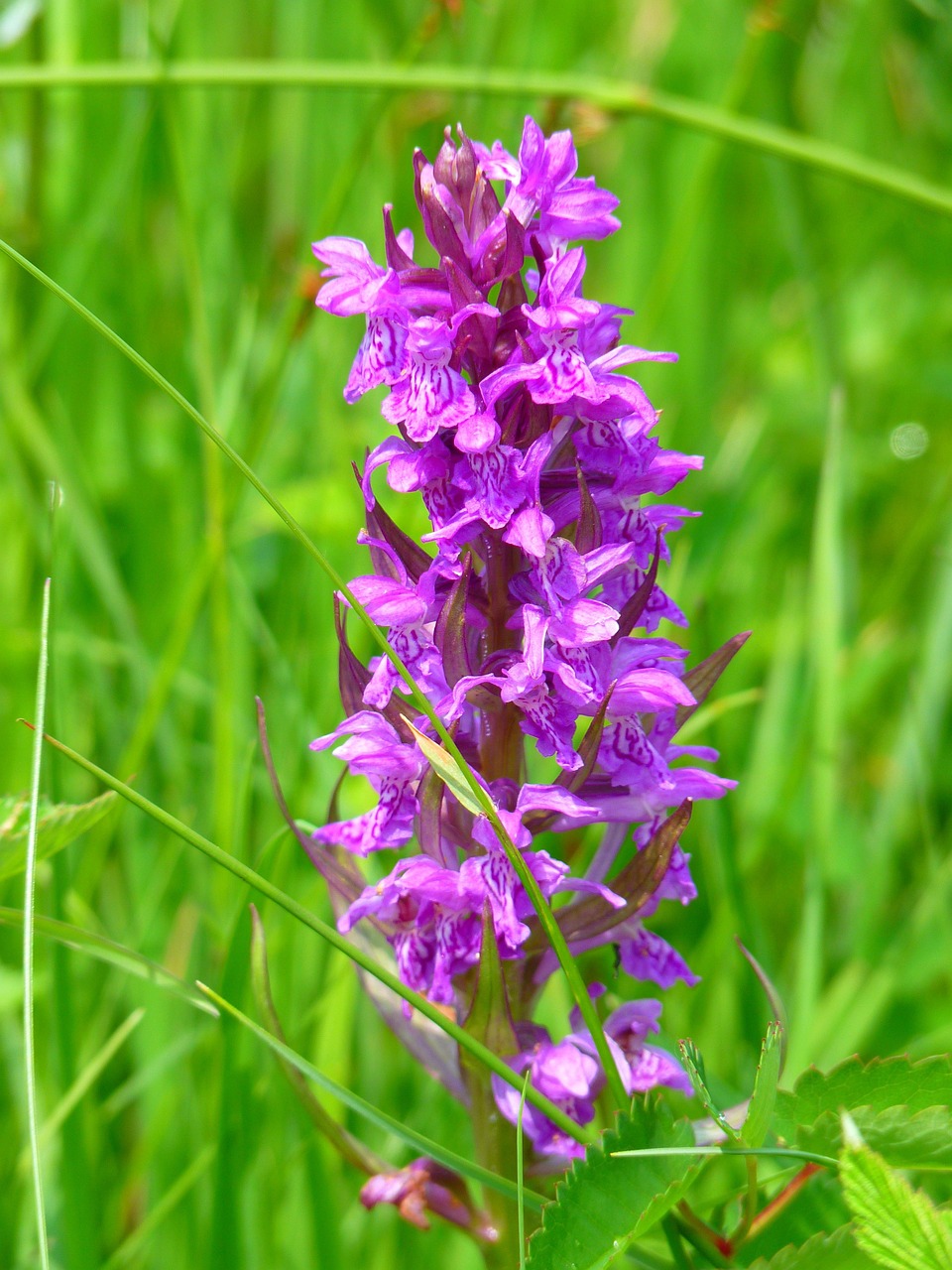The Best Broad-Leaved Trees for Shade and Beauty
Some of the best broad-leaved trees for shade and beauty include the Oak, Maple, and Beech. Each of these trees not only provides ample shade but also adds aesthetic value to landscapes with their vibrant foliage and majestic structures.
Broad-leaved trees are essential components of many landscapes. They offer a variety of benefits, from providing shade on hot summer days to enhancing the scenic beauty of gardens and parks. These trees typically have wide, flat leaves, which allow them to capture sunlight efficiently for photosynthesis. This characteristic also contributes to their ability to provide dense shade, making them ideal for creating comfortable outdoor spaces.

In addition to their practical benefits, broad-leaved trees are known for their stunning seasonal displays. Many species exhibit vibrant colors in the fall, ranging from bright yellows to deep reds. These visual changes not only enhance the environment but also attract wildlife, including birds and pollinators, further enriching the ecosystem.
When selecting broad-leaved trees for your landscape, it is important to consider various factors such as climate, soil type, and available space. Some trees thrive in specific conditions while others are more adaptable. Below is a table that outlines some popular broad-leaved tree species, their average height, and preferred growing conditions.
| Tree Species | Average Height | Preferred Conditions |
|---|---|---|
| Oak | 60-100 feet | Well-drained soil, full sun |
| Maple | 30-100 feet | Moist, well-drained soil, partial to full sun |
| Beech | 50-100 feet | Rich, moist soil, partial shade to full sun |
| Sweetgum | 60-75 feet | Adaptable, prefers moist soil |
Choosing the right tree can significantly enhance your outdoor space. Each species has unique characteristics that contribute to its beauty and functionality. For example, Oak trees are known for their strength and longevity, making them a great choice for long-lasting shade. Maple trees are appreciated for their brilliant fall colors and adaptability to various conditions. Beech trees, with their smooth bark and lush foliage, add elegance to any garden.
In addition to these species, there are many other broad-leaved trees that can enhance your landscape. It’s essential to explore local nurseries or consult with horticulturalists to find the best options suitable for your area. Understanding the requirements and characteristics of each tree will help you create a vibrant and sustainable outdoor environment.
As you plan your landscape design, consider how these trees will interact with other plants and structures in your yard. The right placement can maximize shade while highlighting the beauty of your broad-leaved trees. With careful selection and planning, you can enjoy the myriad benefits these trees offer for years to come.
Choosing the Right Location for Broad-Leaved Trees
When selecting a location for planting broad-leaved trees, several factors must be considered to ensure optimal growth and aesthetic appeal. Proper placement can enhance the beauty of your landscape while maximizing the benefits these trees offer.
Sunlight Requirements
Different tree species have varying sunlight requirements. Some thrive in full sun, while others prefer partial shade. It is important to observe the amount of sunlight the chosen area receives throughout the day. Here are some general guidelines:
- Full Sun: Trees that require full sun need at least six hours of direct sunlight each day. Examples include Oak and Maple trees.
- Partial Shade: Species that prefer partial shade may thrive with four to six hours of sunlight. Beech trees often fall into this category.
- Shade Tolerance: Some trees can grow in shaded areas, receiving less than four hours of sunlight daily. Sweetgum trees are known for their adaptability in such conditions.
Soil Conditions
The type and quality of soil play a crucial role in the health of broad-leaved trees. Testing the soil can provide insights into its pH, nutrient levels, and drainage capacity. Here are some key soil considerations:
- Drainage: Ensure that the soil drains well to prevent root rot. Trees like Oak prefer well-drained soils.
- Nutrient-Rich Soil: Trees such as Maple and Beech thrive in rich, loamy soils that retain moisture.
- Soil pH: Most broad-leaved trees prefer slightly acidic to neutral pH levels (6.0 to 7.0). Regular soil testing can help maintain optimal conditions.
Space and Growth Considerations
Understanding the mature size of broad-leaved trees is essential for proper spacing and placement. Planting trees too close together can lead to competition for resources, stunted growth, and poor air circulation. Here are tips for spacing:
- Mature Heights: Research how tall a tree will grow at maturity to ensure it does not obstruct structures or power lines.
- Crown Spread: Consider the width of the tree’s crown. Leave enough space for branches to spread without interference.
- Root System: Be aware that many broad-leaved trees have extensive root systems that require ample space underground.
Maintenance and Care for Broad-Leaved Trees

To keep broad-leaved trees healthy and beautiful, regular maintenance and care are necessary. Proper care not only ensures healthy growth but also enhances seasonal beauty.
Watering Practices
Young trees require more frequent watering until their roots establish. Here are some watering tips:
- Deep Watering: Water deeply once or twice a week rather than shallowly every day. This encourages deeper root growth.
- Mulching: Applying a layer of mulch can help retain moisture and regulate soil temperature.
- Seasonal Adjustments: Adjust your watering schedule based on rainfall and seasonal changes.
Pruning Techniques
Pruning is essential for maintaining the shape and health of broad-leaved trees. Regular pruning promotes better air circulation, reduces disease risk, and encourages new growth. Consider these practices:
- Timing: The best time to prune most broad-leaved trees is during late winter or early spring before new growth begins.
- Remove Dead or Diseased Branches: Regularly check for and remove any dead or diseased branches to improve tree health.
- Avoid Topping: Topping trees can damage their structure and should be avoided. Instead, aim for selective pruning to maintain natural shape.
Caring for broad-leaved trees requires attention to detail and an understanding of their specific needs. With proper placement, maintenance, and care, these trees can thrive, providing shade and beauty for years to come.
Choosing the Right Broad-Leaved Trees for Your Landscape

When selecting broad-leaved trees for your landscape, it is essential to consider various factors that affect their growth, aesthetic appeal, and environmental suitability. The right tree can enhance your garden’s beauty while providing shade and habitat for wildlife.

Factors to Consider
Several critical factors should guide your decision when choosing broad-leaved trees:
- Climate Zones: Different trees thrive in specific climate zones. Understanding your local climate will help you select trees that can withstand temperature variations, humidity levels, and precipitation.
- Growth Rate: Some trees grow quickly, while others take longer to reach maturity. Fast-growing trees can provide shade sooner, but they may require more maintenance in the long run.
- Wildlife Habitat: Consider how the trees will support local wildlife. Many broad-leaved trees provide food and shelter for birds, insects, and other animals.
Popular Broad-Leaved Trees for Landscaping
Here are some popular broad-leaved trees that are well-suited for various landscaping needs:
| Tree Species | Characteristics | Ideal Use |
|---|---|---|
| Red Maple | Vibrant fall colors, adaptable to different soils. | Shade and ornamental purposes. |
| Silver Birch | Distinctive white bark, graceful form. | Ornamental planting. |
| Eastern Cottonwood | Rapid growth, large leaves. | Shade in large areas. |
| American Sycamore | Unique mottled bark, large canopy. | Urban environments and parks. |
Native vs. Non-Native Trees
When selecting broad-leaved trees, consider whether to plant native or non-native species. Native trees are adapted to the local environment and provide essential habitat for wildlife. Non-native species may offer unique aesthetic qualities but can sometimes become invasive.
- Native Trees: Planting native broad-leaved trees supports biodiversity and helps maintain the local ecosystem. Examples include Oak and Maple species.
- Non-Native Trees: While they may add diversity to your landscape, non-native trees can sometimes outcompete local flora. It is crucial to research their potential impact before planting.
The Seasonal Appeal of Broad-Leaved Trees
Broad-leaved trees are celebrated for their seasonal transformations. Each season brings a new experience and beauty to the landscape.
Spring Awakening
In spring, many broad-leaved trees produce beautiful blossoms before their leaves unfurl. This period can attract pollinators such as bees and butterflies. For instance, the flowering of Cherry trees heralds the arrival of spring with stunning pink or white blooms.
Summer Shade
During the summer months, broad-leaved trees provide much-needed shade. Their lush canopies create comfortable outdoor spaces for relaxation and gatherings. Additionally, the dense foliage helps cool the surrounding area, making summer days more enjoyable.
Autumn Colors
The fall is perhaps when broad-leaved trees showcase their most spectacular display. The leaves transform into a vibrant palette of reds, oranges, and yellows. This seasonal change not only enhances the beauty of landscapes but also offers an opportunity for outdoor activities like leaf-peeping.
Winter Structure
In winter, many broad-leaved trees shed their leaves, revealing their unique bark textures and architectural forms. This stark beauty adds character to gardens during the colder months, providing visual interest even when the foliage is absent.
The seasonal appeal of broad-leaved trees makes them a valuable addition to any landscape. By understanding their characteristics and selecting suitable species, you can create a dynamic outdoor space that changes throughout the year.
Environmental Benefits of Broad-Leaved Trees
Broad-leaved trees do not only enhance the aesthetic appeal of landscapes but also play a significant role in promoting environmental health. Their contributions extend beyond mere beauty, impacting air quality, soil health, and biodiversity.
Air Quality Improvement
One of the most vital benefits of broad-leaved trees is their ability to improve air quality. Through the process of photosynthesis, trees absorb carbon dioxide and release oxygen, making them essential for a healthy atmosphere. Additionally, their leaves capture dust, pollen, and other pollutants, further purifying the air. This is particularly beneficial in urban areas where pollution levels can be high.
Soil Erosion Prevention
The extensive root systems of broad-leaved trees help anchor soil in place, preventing erosion. This is especially important in areas prone to heavy rainfall or on slopes. By stabilizing the soil, trees reduce the risk of landslides and protect waterways from sedimentation, which can harm aquatic ecosystems.
Biodiversity Support
Broad-leaved trees provide habitat and food for various wildlife species. Birds, insects, and mammals often rely on these trees for shelter and sustenance. By planting a diverse range of tree species, you can create a thriving ecosystem that supports local biodiversity.
Climate Regulation
By providing shade and releasing moisture through transpiration, broad-leaved trees contribute to regulating local climates. They can help lower temperatures in urban areas, reducing the heat island effect commonly experienced in cities. This cooling effect can lead to lower energy costs for air conditioning during hot summer months.
Choosing the Right Trees for Your Space
When considering broad-leaved trees for your landscape, it is essential to evaluate the specific conditions of your garden or yard. Factors such as available space, sunlight exposure, and soil type will dictate which species are appropriate for your environment.
- Assess Space: Measure the area where you plan to plant trees. Ensure that there is sufficient room for their mature size without interfering with structures or other plants.
- Evaluate Sunlight: Observe how much sunlight the area receives daily. Choose trees that match the sunlight conditions—full sun or partial shade.
- Consider Soil Type: Test your soil to determine its pH and nutrient levels. Select tree species that thrive in your specific soil conditions.
Final Thoughts
Broad-leaved trees offer a unique combination of beauty, functionality, and environmental benefits. From providing shade during hot summer days to showcasing vibrant colors in autumn, these trees enhance the landscape throughout the seasons. Choosing the right species and ensuring proper placement can lead to a thriving ecosystem that contributes positively to both your yard and the surrounding environment.
The diversity of broad-leaved trees available allows for various landscaping styles, whether you prefer a formal garden setting or a more naturalistic design. As you consider your options, remember to prioritize native species whenever possible. Native trees are well-suited to local conditions and support native wildlife.
Caring for your chosen broad-leaved trees involves a commitment to their maintenance and understanding their specific needs. With appropriate care, these trees can flourish for generations, providing shade, beauty, and a wealth of ecological benefits.
In summary, broad-leaved trees are not just an ornamental choice; they are an investment in your landscape’s future health and beauty. By thoughtfully selecting and caring for these magnificent plants, you can create an inviting outdoor environment that enhances both personal enjoyment and ecological well-being.
